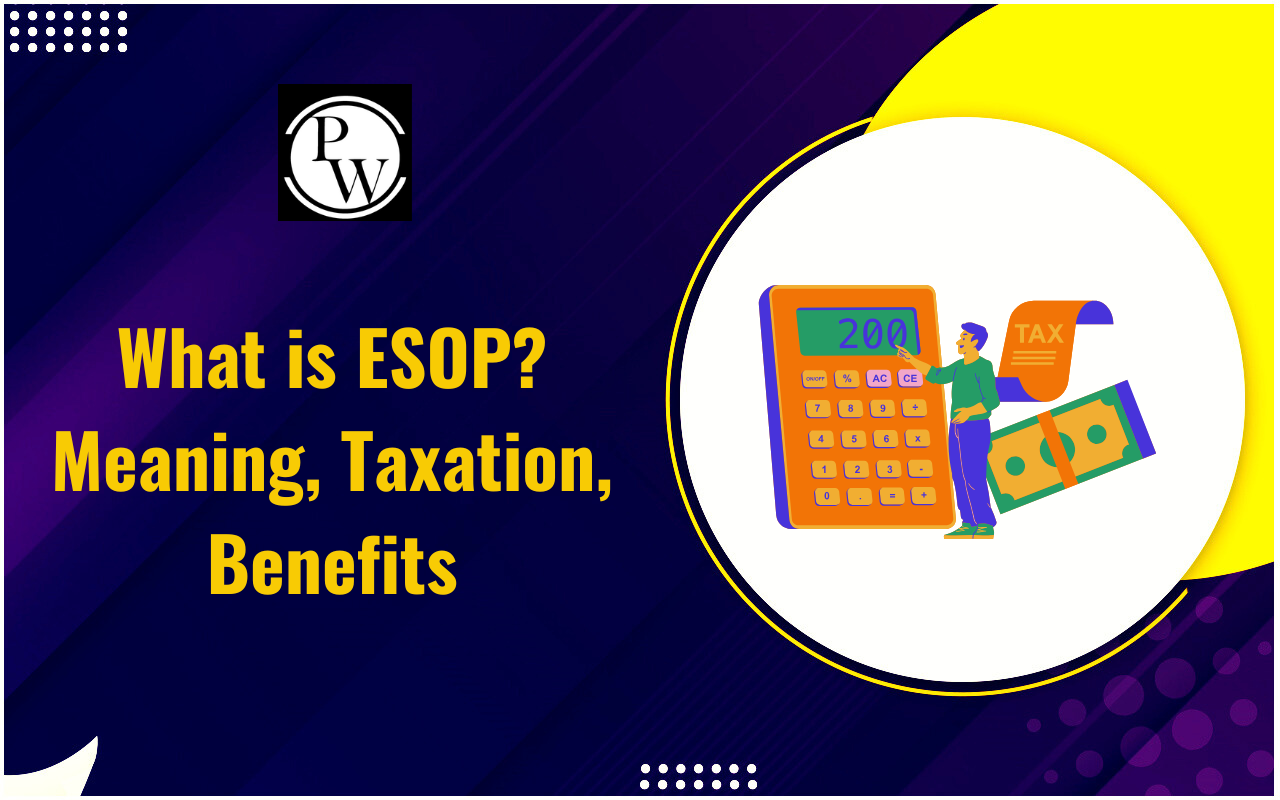

The time value of money (TVM) is a fundamental financial concept that asserts a rupee today is worth more than a rupee in the future due to its potential earning capacity. This principle is crucial for various financial decisions, investments, and valuations, as it helps in understanding the value of money over time.
Concepts of Time Value of Money
The time value of money is based on the idea that money available now can be invested to earn interest, leading to a greater amount in the future. This concept is essential for understanding investments, savings, loans, and other financial activities.Compound and Simple Interest
Thus far, we have seen instances in which funds are invested at compound interest, implying that every interest payment is reinvested in order to generate further interest at later times. On the other hand, an investment only yields simple interest if interest is not generated on interest. In this scenario, the investment increases as follows: Future value = Present Value [1+Number of years x Interest rate]Present Value of a Single Amount
Present value (PV) is the current value of a future sum of money, discounted at a specific interest rate. The formula is: PV=FV (1+r ) n Where:- PV = Present Value
- FV = Future Value
- r = Interest Rate
- n = Number of Periods
Present Value of an Uneven Series
To calculate the present value of an uneven series of cash flows, each cash flow is discounted back to its present value and then summed up. The formula for each cash flow is: PV=∑CFn (1+r ) n Where:- CFn = Cash Flow at time
- r = Interest Rate
- n = Time Period
Present value of an Annuity
Given a certain rate of return, or discount rate, the present value of future annuity payments is the annuity's current value. The annuity's present value decreases with an increase in the discount rate. Important points- The amount of money required today to cover a series of future annuity payments is known as the present value of an annuity.
- A sum of money acquired today is worth more than the same amount at a later date due to the time value of money.
- A present value calculation can be used to ascertain if taking an annuity that is paid out over a number of years or a lump amount now will result in a larger payout.
Present value of Perpetuity
A perpetual income stream with constant cash flows is represented, and its present value is calculated by discounting it at a given rate. In the case of preferred stocks and real estate, where constant dividends or income are anticipated indefinitely, this perpetuity is frequently used. The steady cash flow is divided by the discount rate to get the present value of perpetuity. The formula modifies by deducting the growth rate from the discount rate in the event that the perpetuity grows at a constant pace. Present value of perpetuity can be used for the following purposes:- Preferred stock valuation, when fixed dividends are paid over the course of the business.
- Evaluating real estate holdings that have stable revenue sources.
- Providing a fixed income stream for an infinite amount of time, serving as the foundation for retirement planning and endowment schemes.
Future Value of a Single Amount
The future value of a single amount is the worth of a present single amount taken to a future date at a given interest rate. "Future value" in this context refers to the amount that, assuming compound interest, the investment will increase in value at a later time. A lump sum invested at the start of a period (such as year 1) and maintained throughout all periods is referred to as the "single amount." Formula and Calculation of Future Value FV=I×(1+(R×T)) where: I=Investment amount, R=Interest rate and T=Number of years.Future Value of an Annuity
The worth of a series of future installments at a specific date, contingent on a specific rate of return, or discount rate, is the future value of an annuity. The future value of the annuity increases with the discount rate. Important characteristics:- An annuity's future value can be used to determine how much money will be worth a series of payments at a specific future date.
- In contrast, an annuity's present value indicates the amount of money needed to generate a series of future payments.
- Payments are made in an ordinary annuity at the conclusion of each prearranged period. Payments are made at the start of each period in an annuity payable.
Annuity Due vs. Ordinary Annuity
Payments: The main difference between an annuity due and the more common ordinary annuity is the timing of the payments. For an ordinary annuity, payments are made at the end of each period, while for an annuity due, payments are made at the beginning of each period. Examples of ordinary annuity payments include loan repayments, mortgage payments, bond interest payments, and dividend payments. Present value: Another difference is that the present value of an annuity due is higher than that of an ordinary annuity. This is because of the time value of money principle, as annuity due payments are received earlier.Doubling Period
To estimate how long it takes for an investment to double at a given interest rate, investors commonly use two rules: the Rule of 72 and the Rule of 69.- Rule of 72: This rule involves dividing 72 by the interest rate to determine the doubling period. For example, if the interest rate is 8%, the doubling period is approximately 9 years (72/8). This rule is simple and useful for estimating doubling time, especially for interest rates between 6% and 10%.
- Rule of 69: A more accurate but slightly more complex rule, the Rule of 69 calculates the doubling period by dividing 69 by the interest rate plus 0.35. This rule assumes continuous compounding and provides a closer estimate to the actual doubling time. It's suitable for rates above 6%.
- Rule of 70: Similar to the Rule of 72, the Rule of 70 involves dividing 70 by the growth rate to estimate doubling time. For example, if an investment has a fixed annual interest rate of 10%, it would take approximately 7 years (70/10) for the investment to double to $20,000 from $10,000.
| Also Check: | |
| Introduction to Accounting | Capital Structure |
| Introduction to Accounting Standards | Introduction to Corporate Accounting |
| Law relating to Limitation | Law relating to Evidence |
Time Value of Money FAQs
What is the Time Value of Money (TVM)?
The Time Value of Money (TVM) concept asserts that a rupee today is worth more than a rupee in the future due to its potential earning capacity. It is crucial in finance for understanding the value of money over time.
How does compound interest differ from simple interest?
Compound interest involves earning interest on both the initial principal and accumulated interest, leading to exponential growth over time. In contrast, simple interest is calculated only on the initial principal amount.
What is the difference between present value and future value?
Present value (PV) is the current worth of a future sum of money, discounted at a specific interest rate, while future value (FV) is the value of an investment at a specific date in the future, considering compound interest.
How do annuities work?
Annuities involve a series of regular payments made or received at equal intervals over a specified period. Annuities can be ordinary (payments at the end of each period) or annuity due (payments at the beginning of each period).
What is the Rule of 72 and how is it used in finance?
The Rule of 72 is a simple formula used to estimate the time it takes for an investment to double at a given interest rate. It states that dividing 72 by the interest rate gives an approximate number of years for the investment to double.
🔥 Trending Blogs
Talk to a counsellorHave doubts? Our support team will be happy to assist you!

Check out these Related Articles
Free Learning Resources
PW Books
Notes (Class 10-12)
PW Study Materials
Notes (Class 6-9)
Ncert Solutions
Govt Exams
Class 6th to 12th Online Courses
Govt Job Exams Courses
UPSC Coaching
Defence Exam Coaching
Gate Exam Coaching
Other Exams
Know about Physics Wallah
Physics Wallah is an Indian edtech platform that provides accessible & comprehensive learning experiences to students from Class 6th to postgraduate level. We also provide extensive NCERT solutions, sample paper, NEET, JEE Mains, BITSAT previous year papers & more such resources to students. Physics Wallah also caters to over 3.5 million registered students and over 78 lakh+ Youtube subscribers with 4.8 rating on its app.
We Stand Out because
We provide students with intensive courses with India’s qualified & experienced faculties & mentors. PW strives to make the learning experience comprehensive and accessible for students of all sections of society. We believe in empowering every single student who couldn't dream of a good career in engineering and medical field earlier.
Our Key Focus Areas
Physics Wallah's main focus is to make the learning experience as economical as possible for all students. With our affordable courses like Lakshya, Udaan and Arjuna and many others, we have been able to provide a platform for lakhs of aspirants. From providing Chemistry, Maths, Physics formula to giving e-books of eminent authors like RD Sharma, RS Aggarwal and Lakhmir Singh, PW focuses on every single student's need for preparation.
What Makes Us Different
Physics Wallah strives to develop a comprehensive pedagogical structure for students, where they get a state-of-the-art learning experience with study material and resources. Apart from catering students preparing for JEE Mains and NEET, PW also provides study material for each state board like Uttar Pradesh, Bihar, and others
Copyright © 2025 Physicswallah Limited All rights reserved.











